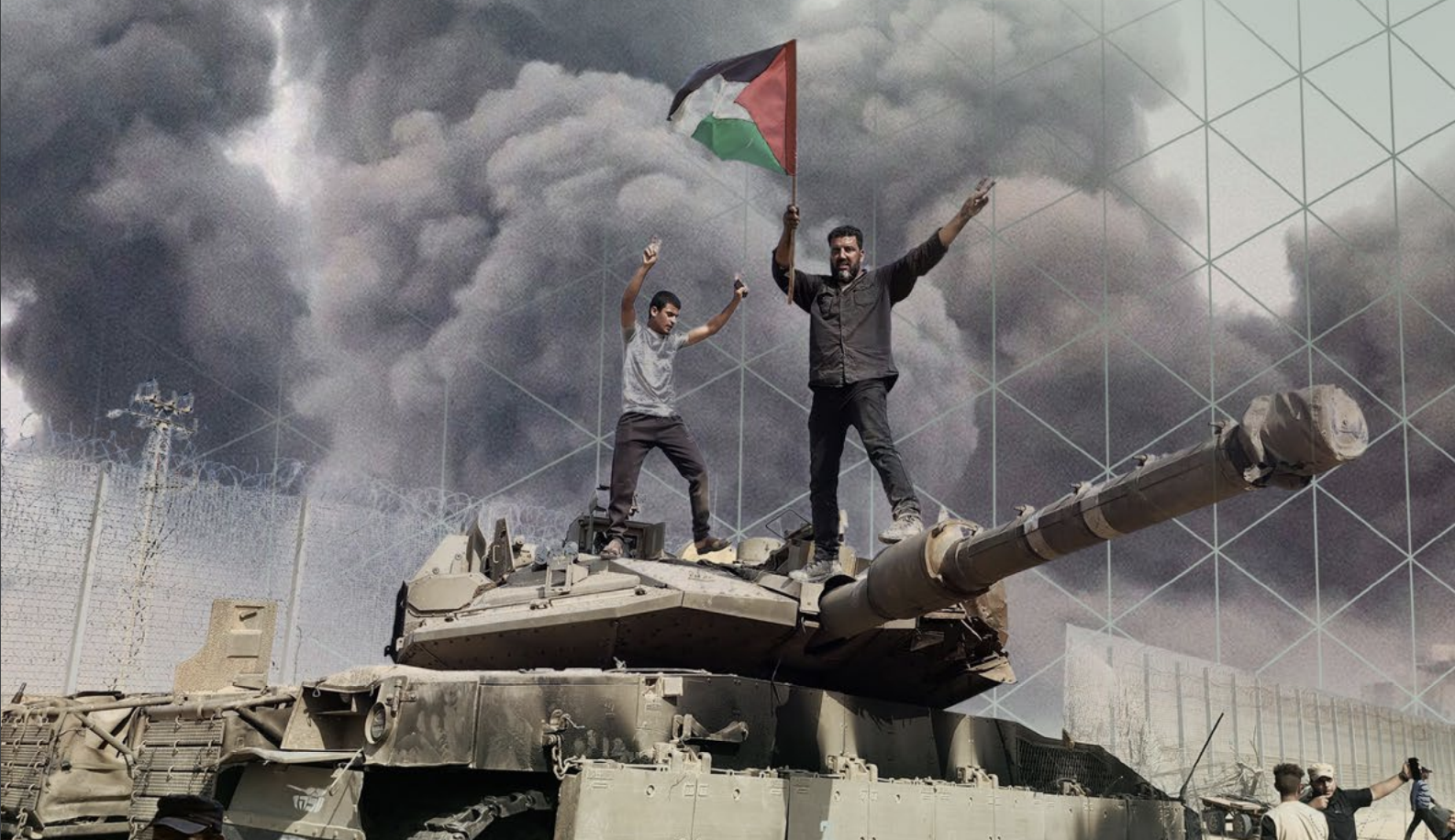This detailed document serves to illuminate the motivations behind their October 7 cross-border incursion into Israel, directly tying it to the broader Palestinian cause, while robustly countering Israeli allegations surrounding the operation.
In a detailed exposé, Hamas presented its perspective on its recent revolutionary cross-border attack, challenging Israeli narratives and elucidating its motives linked to the Palestinian liberation cause.
The thorough 16-page report was released on Sunday, titled “Our Narrative…Operation Al-Aqsa Flood,” the full report can be accessed here.
This detailed document serves to illuminate the motivations behind their October 7 cross-border incursion into Israel, directly tying it to the broader Palestinian cause. Furthermore, it robustly counters Israeli allegations surrounding the operation.
The report begins by establishing Operation Al-Aqsa Flood as a necessary and reactive measure against Israel’s aggressive strategies aimed at eradicating the Palestinian cause.
It addresses the “steadfast Palestinian people,” who have been enduring a genocidal Israeli military campaign, now in its 107th day.
It traces the origins of the Palestinian plight to the early days of Zionist colonisation and even the British colonial era.
It explains decades of suffering under oppression, rights deprivation, and apartheid policies.
The document critiques the so-called peaceful settlement process and the biased support of the US and its Western allies towards Israel, accusing them of enabling the prolongation of the occupation and the suppression of the Palestinian people.
“After 75 years of relentless occupation and suffering, and after the failure of all liberation initiatives and the disastrous results of the peace process, what else could the world expect from the Palestinian people?” the report questions.
This includes efforts to seize Palestinian lands, the Judaization of these territories, and the bid to exert full control over the Al-Aqsa Mosque and other holy sites.
Hamas positions the operation as a strategic endeavour to relieve the Gaza Strip from its blockade, emancipate it from Israeli occupation, and retrieve national rights. The ultimate goal, as outlined, is the establishment of a sovereign Palestinian state, with Jerusalem as its capital.
When it comes to operational imperfections, Hamas acknowledged that “some faults” occurred due to the unexpected breakdown of the Israeli security and military system, leading to chaos along the Gaza border.
The report prides itself on the humane treatment of all civilians held in Gaza, highlighting their release during a humanitarian truce in exchange for Palestinian women and children detained in Israeli jails.
Addressing the contentious issue of targeting Israeli civilians, the report firmly denies such actions, underlining a moral and religious commitment to avoid civilian casualties, particularly women, children, and the elderly.
The second section, ‘The Events of Operation Al-Aqsa Flood,’ categorically refutes allegations against the Al-Qassam Brigades, the armed wing of Hamas, regarding the targeting of civilians on October 7, dismissing them as baseless fabrications stemming from Israeli propaganda.
The report insists that independent sources have not substantiated these claims.
Furthermore, video footage and testimonies from Israelis allegedly show that the Al-Qassam Brigades did not target civilians on that day.
The report claims that many Israeli casualties were a result of friendly fire from their army and police amidst the confusion.
“The Palestinian fighters exclusively targeted occupation soldiers and armed individuals opposing our people,” the document asserts.
The third section calls for an international investigation into Israeli war crimes, highlighting the resistance faced by Palestine when requesting such inquiries at the ICC.
Hamas urges countries, particularly the US, Germany, Canada, and the UK, to support justice by endorsing investigations into the crimes committed in occupied Palestine.
In its fourth section, titled ‘Who is Hamas’, the group defines itself as a national liberation movement with definitive goals and a mission grounded in the Palestinian right to self-defence, liberation, and self-determination.
It speaks of the Palestinian people’s heroic battle against the brutal and prolonged Israeli occupation, marked by unprecedented aggression and massacres, predominantly targeting civilians.
The final section, ‘What is Needed’, calls for an immediate cessation of Israeli aggression in Gaza, legal accountability for the human suffering inflicted upon the Palestinian people, and charges against Israel for crimes against civilians and infrastructure.
Hamas appeals to the global community, especially previously colonised nations, to recognise the plight of the Palestinian people and initiate a worldwide solidarity movement, promoting justice, equality, and the right to freedom and dignity.
Following Hamas’ cross-border incursion, Israel initiated a severe offensive on the Gaza Strip, killing over 25,000 Palestinians and injuring 62,681 others.
The UN reports that this offensive has displaced 85% of Gaza’s population, leading to critical shortages of food, water, and medicine, and damaging or destroying 60% of the enclave’s infrastructure.
The Hamas Media Office, in releasing the document in both Arabic and English, offers rare insights into the decision-making and occurrences of the significant resistance operation on October 7.







